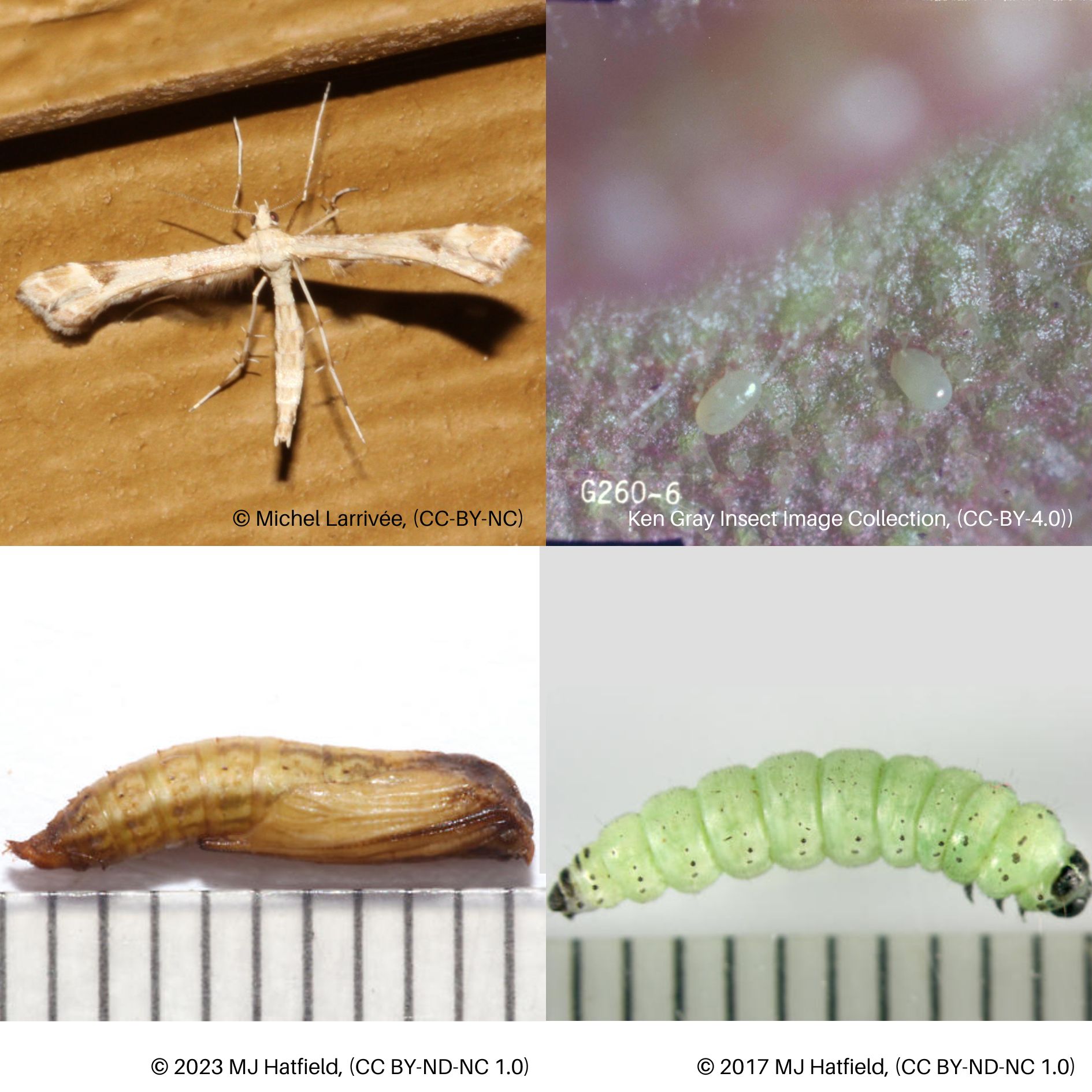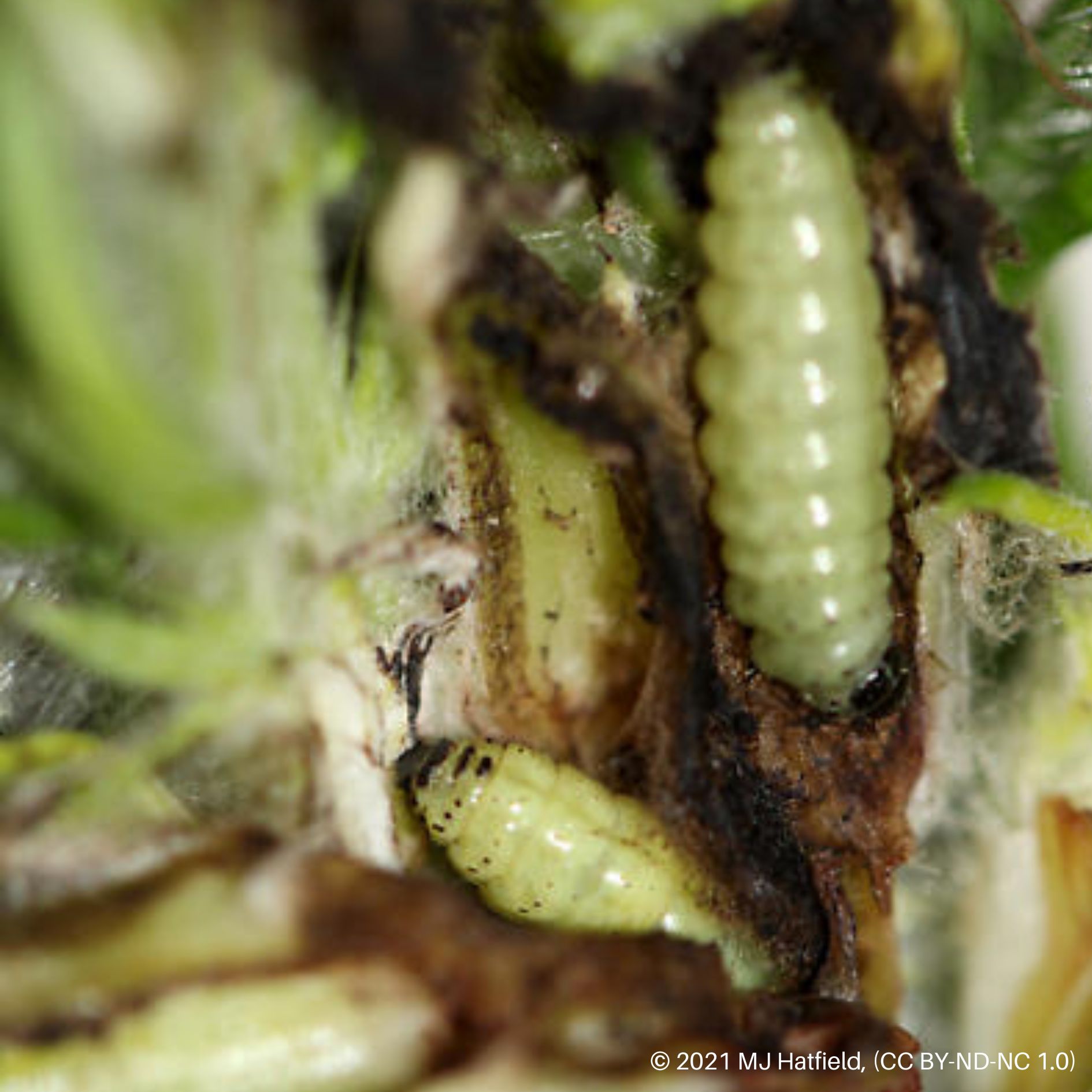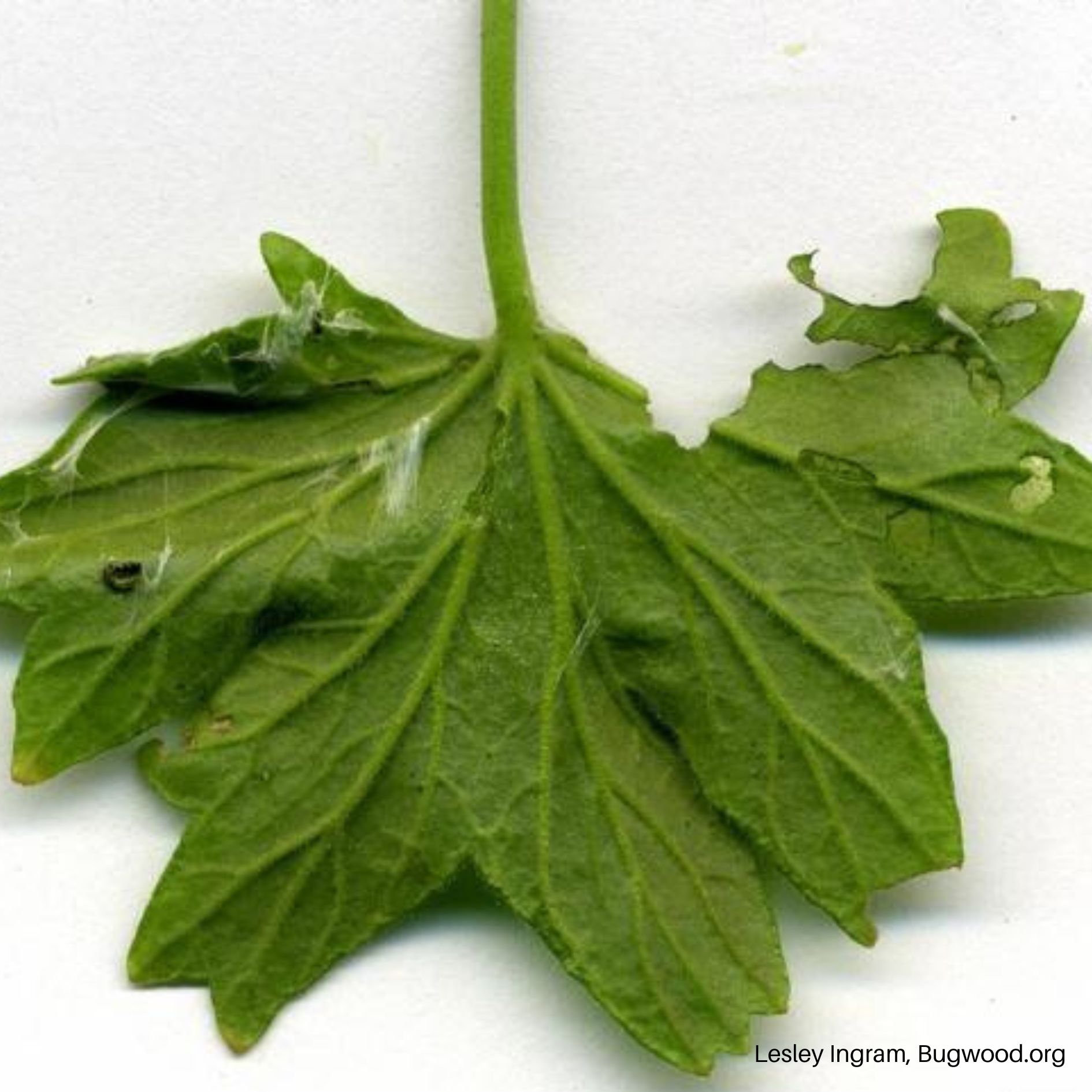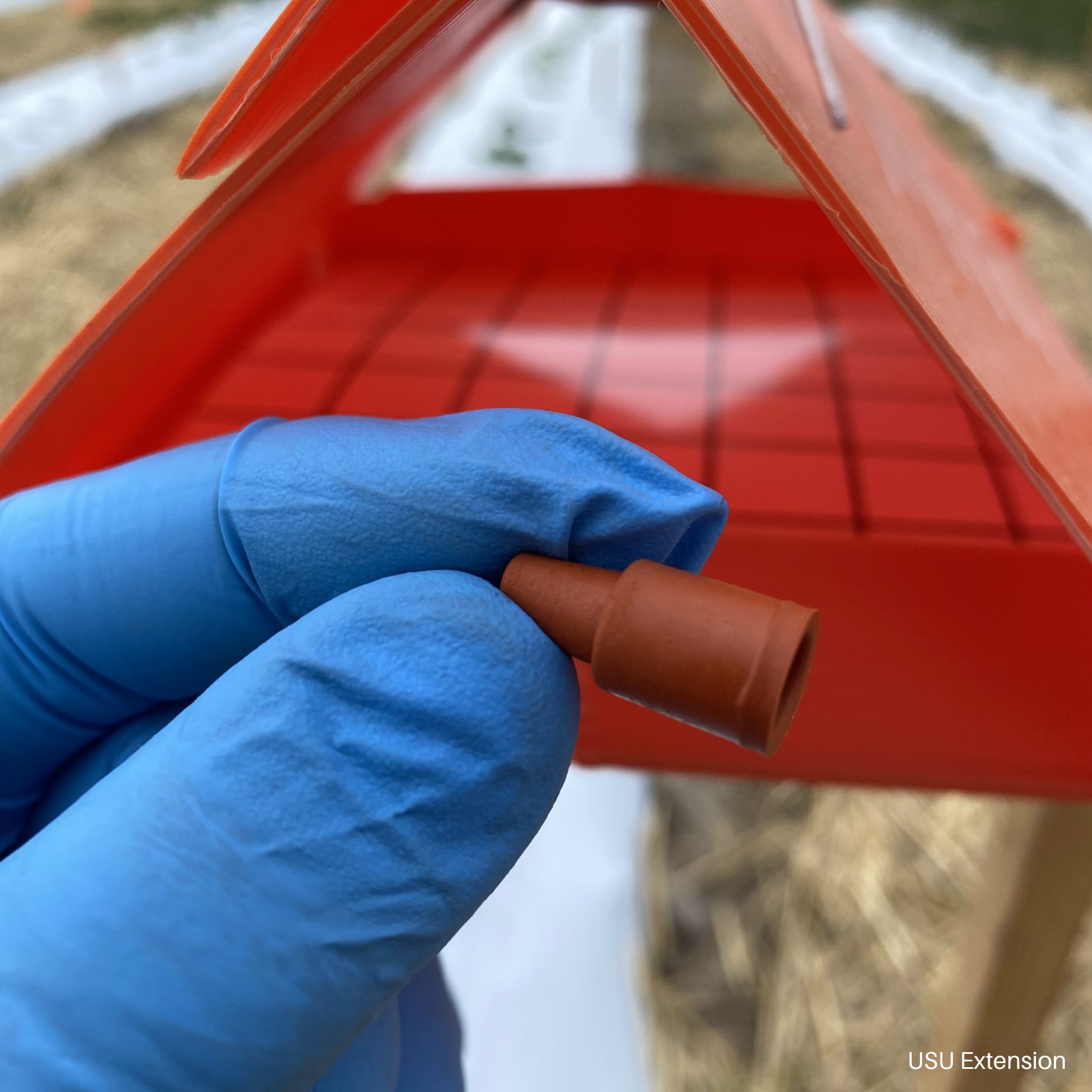Artichoke Plume Moth
 Artichoke Plume Moth Life Stages
Artichoke Plume Moth Life Stages Artichoke Plume Moth Caterpillars Feeding in Leaf Stalk
Artichoke Plume Moth Caterpillars Feeding in Leaf Stalk Plume Moth Foliage Feeding Damage
Plume Moth Foliage Feeding Damage Pheremone Bait and Orange Delta Trap for Monitoring Plume Moth Populations
Pheremone Bait and Orange Delta Trap for Monitoring Plume Moth PopulationsHOSTS
- Artichoke
- Weedy Thistles
OVERVIEW
Artichoke plume moths (Platyptilia carduidactyla) are part of the family Pterophoridae.
DESCRIPTION
Adult moths have brown, lobed wings that can reach .75-1.25 inches (18-31mm) across. Larvae have black head caps with yellow or white bodies. Newly hatched larvae will be about .04 inches (1 mm) long, while mature larvae can be up to .5 inches (12 mm).
BIOLOGY
Egg | Larva | Pupa | Adult
Adults will lay tiny eggs, about 0.02 inch or 0.5 mm, singly on the underside of leaves. After hatching, larvae feed on young foliage or tunnel into the host plant tissue to feed from the inside. Larvae will usually drop from the host plant to the ground to pupate among plant debris.
SYMPTOMS
Larvae usually feed on the artichoke head, although they can be found in any portion of the plant. Larvae can burrow through leaf tissue, crowns, and stalks.
SCOUTING
- Early in the growing season, eggs and larvae can be found in the center of the plants on young leaf tissue.
- Once blossoms are produced, eggs will be laid on the leaves below the flower heads.
- Pheromone traps can be used to monitor adult populations.
GENERAL MANAGEMENT
- Infested buds should be removed and destroyed.
- Remove weedy thistles from around fields as they can serve as alternative hosts.
INSECTICIDES
Coming soon

